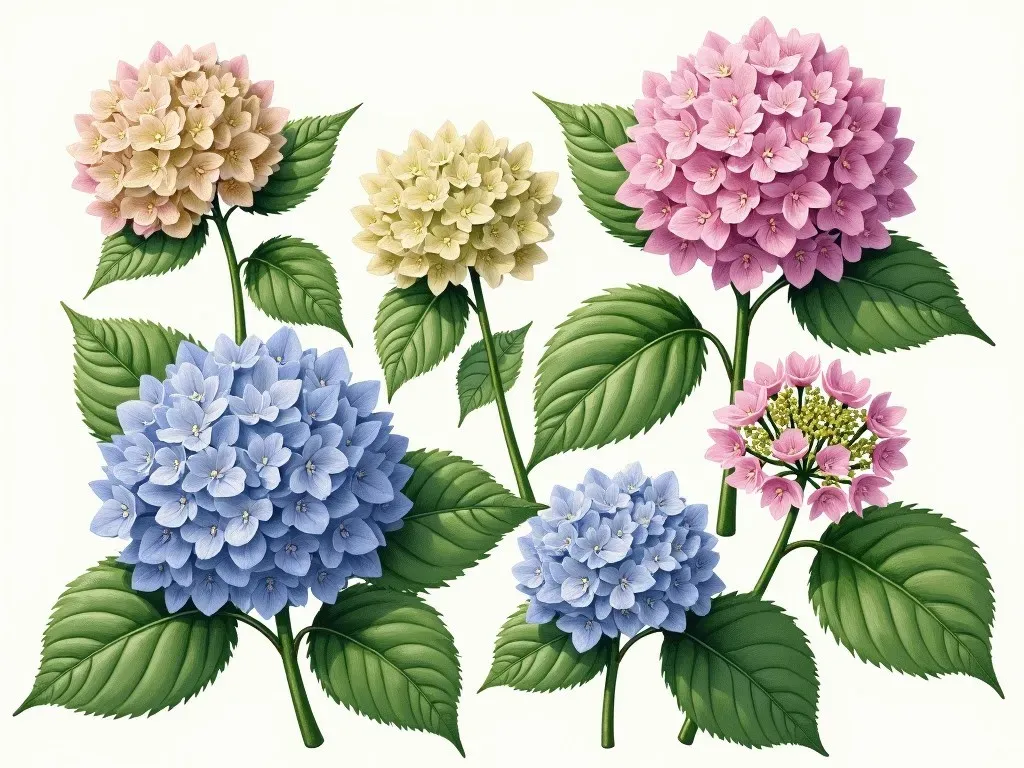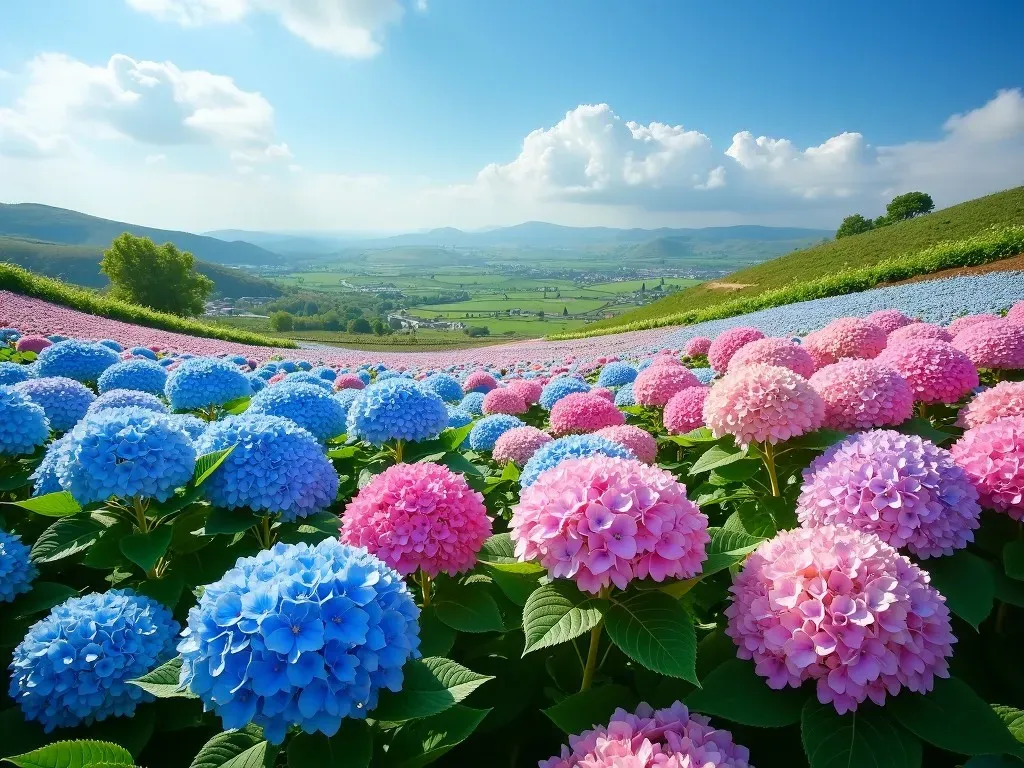The “Unique” hydrangea, scientifically known as Hydrangea paniculata ‘Unique’, is a cold-hardy shrub celebrated for its stunning clusters of large flower heads that transition in color throughout the blooming season. These flowers display an impressive transformation from white to a captivating pink as they mature, making them a true highlight in any garden or landscape.
Understanding the Unique Hydrangea
Hydrangea paniculata ‘Unique’ is an exceptional variety within the panicle hydrangeas. Known for its upright growth habit, this deciduous shrub can reach heights of 6 to 10 feet, thriving best in USDA hardiness zones 3-8. The plant features:
- Large, conical flower clusters measuring between 8 to 15 inches in length.
- Deep green foliage that provides a beautiful backdrop to its eye-catching blooms.
- A robust growth rate, making it an attractive option for gardeners seeking rapid results.

Key Characteristics of Hydrangea paniculata ‘Unique’
| Feature | Description |
|---|---|
| Height | 6 to 10 feet |
| Flower Color | Starts white, turns to pink as it ages |
| Flower Size | 8 to 15 inches long |
| Growth Habit | Upright and bushy |
| Foliage | Dark green leaves that provide contrast to blooms |
| Hardiness Zones | USDA Zones 3-8 |
| Soil Preference | Well-drained, rich, moist soil |
| Sun Exposure | Prefers full sun to part shade |
| Blooming Period | Late summer through autumn |
Growing the Unique Hydrangea
Planting Tips
- Location: Choose a site that receives full sun or partial shade, ensuring at least four hours of direct sunlight daily for optimal flowering.
- Soil Preparation: The plant prefers well-drained soil rich in organic matter. Adding compost can enhance soil quality.
- Watering: Water regularly to maintain consistent soil moisture, particularly during dry spells.
- Spacing: Plant each shrub approximately 4 to 6 feet apart to allow for proper air circulation and growth.
Care and Maintenance
- Pruning: Prune in late winter or early spring, cutting back dead wood and maintaining a shape that facilitates light penetration.
- Fertilizing: A balanced fertilizer during the growing season supports vigorous foliage and flowering.
- Mulching: Applying mulch helps retain soil moisture and suppresses weeds.
Common Variants of Hydrangea paniculata
While Hydrangea paniculata ‘Unique’ stands out for many reasons, Other notable variants include:
- ‘Limelight’: Characterized by its striking lime-green blooms.
- ‘Little Lime’: A compact version ideal for smaller gardens.
- ‘Tall Ball’: Known for its large, round flower clusters.

Reference Video
Propagation Techniques
Seed Propagation
Though not too common, propagating through seeds is possible. Collect seeds in the fall and plant them in a seed starting mix, providing warmth and moisture for successful germination.
Cutting Propagation
A more popular method, stem cuttings can be taken from healthy plants. Use the following steps:
- Take 4 to 6-inch cuttings from the tips of healthy branches in spring or early summer.
- Remove the lower leaves and dip the cut end in rooting hormone.
- Plant the cutting in a well-draining potting mix and water lightly.
- Cover the pot with a plastic bag to maintain humidity until roots develop, typically around 4-6 weeks.
Division
Dividing established plants is another suitable method for propagation. During early spring, carefully uproot the plant and separate the root ball into smaller sections, each with its own set of stems.
Unique Hydrangea Uses in Landscaping
The unique hydrangea serves several purposes:
- Foundation Planting: Create an attractive foundation for homes by planting these shrubs along the perimeter.
- Mixed Borders: Combine with other flowering plants for vibrant garden displays.
- Specimen Plant: Use as a focal point in larger landscapes due to its impressive height and bloom performance.
Frequently Asked Questions (FAQs)
What is the ideal planting time for Unique Hydrangeas?
The best time to plant Unique hydrangeas is in spring or early fall when temperatures are cooler and rainfall is more consistent.
Can Hydrangea paniculata ‘Unique’ be grown in containers?
Yes! Ensure that the container has proper drainage and select a size large enough to accommodate the plant’s expansive root system.
How often should I water my Unique hydrangea?
During the first year after planting, regular watering is essential. Once established, these plants can tolerate some drought but prefer consistent moisture.
Do Unique hydrangeas require a lot of sunlight?
They thrive in full sun but also grow in partial shade. It’s essential to provide at least 4 hours of sunlight daily for optimal blooming.
Are there any pests or diseases that affect Unique hydrangeas?
Common pests include aphids and spider mites. Powdery mildew can also affect the foliage, particularly in overly humid conditions. Proper air circulation and timely treatment can mitigate these issues.
For more information about the unique hydrangea and its care requirements, you can visit Fine Gardening.

Through proper care and strategic planting, the unique hydrangea can provide year-round beauty, vibrant color transitions, and a delightful addition to both residential and commercial landscapes.


